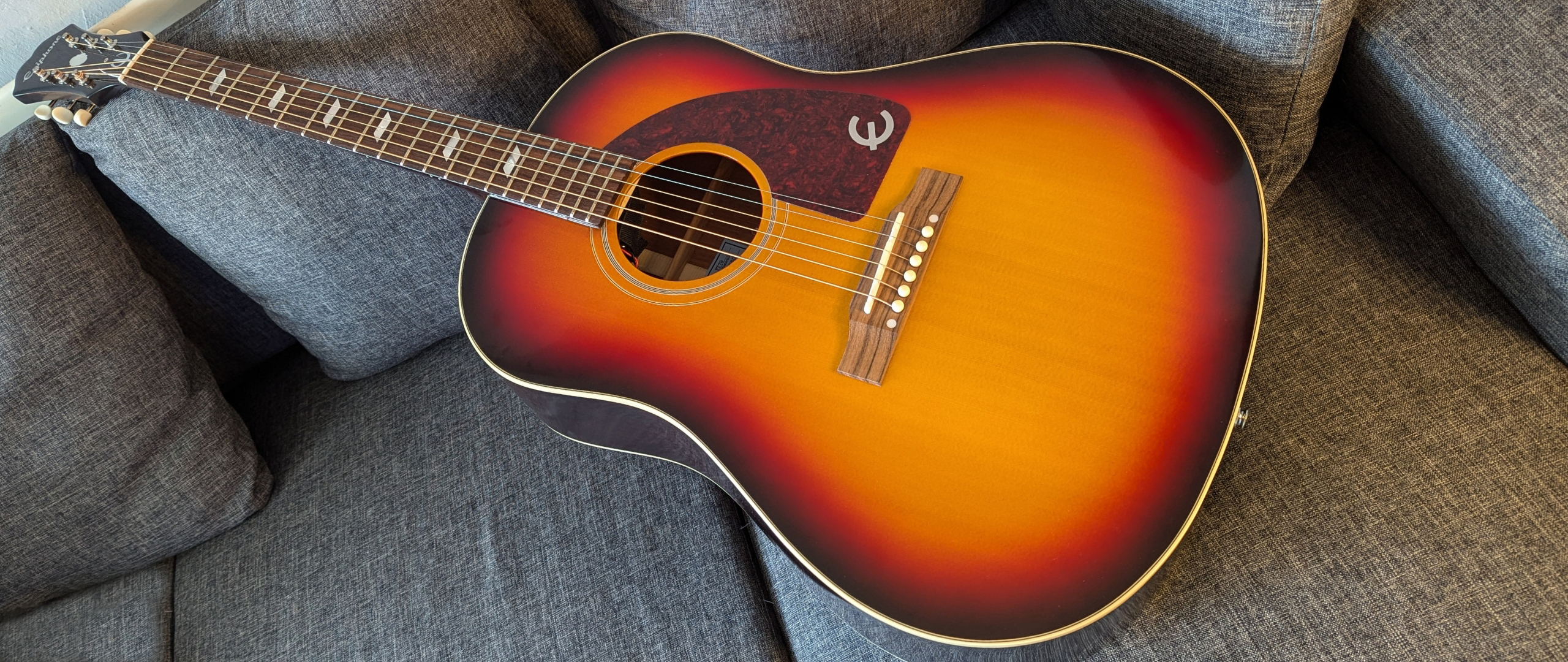
Although not as well known as its more famous cousins, the J-45 and the Hummingbird, the Epiphone Masterbilt Texan could be just the thing if you want the look and feel of a Gibson round-shouldered dreadnought but prefer a longer scale length. Famously used by guitarists like Paul McCartney, Peter Frampton, and Noel Gallagher, the Texan is no stranger to the hands of legendary players despite not carrying the full-fat Gibson logo on its headstock.
With its ultra-thin nut width and longer scale, the Texan first appeared way back in 1958, manufactured in two factories in Philadelphia and Kalamazoo. The original model was classified as an Advanced Jumbo rather than the round-shouldered dreadnought we see now, but that was just Gibson’s way of labeling their dreadnought guitars.
It was a unique proposition at the time and it’s now got well over 60 years of history to add to its mystique. But should you be picking it over a J-45 or Hummingbird? I got hands-on to find out.
Features
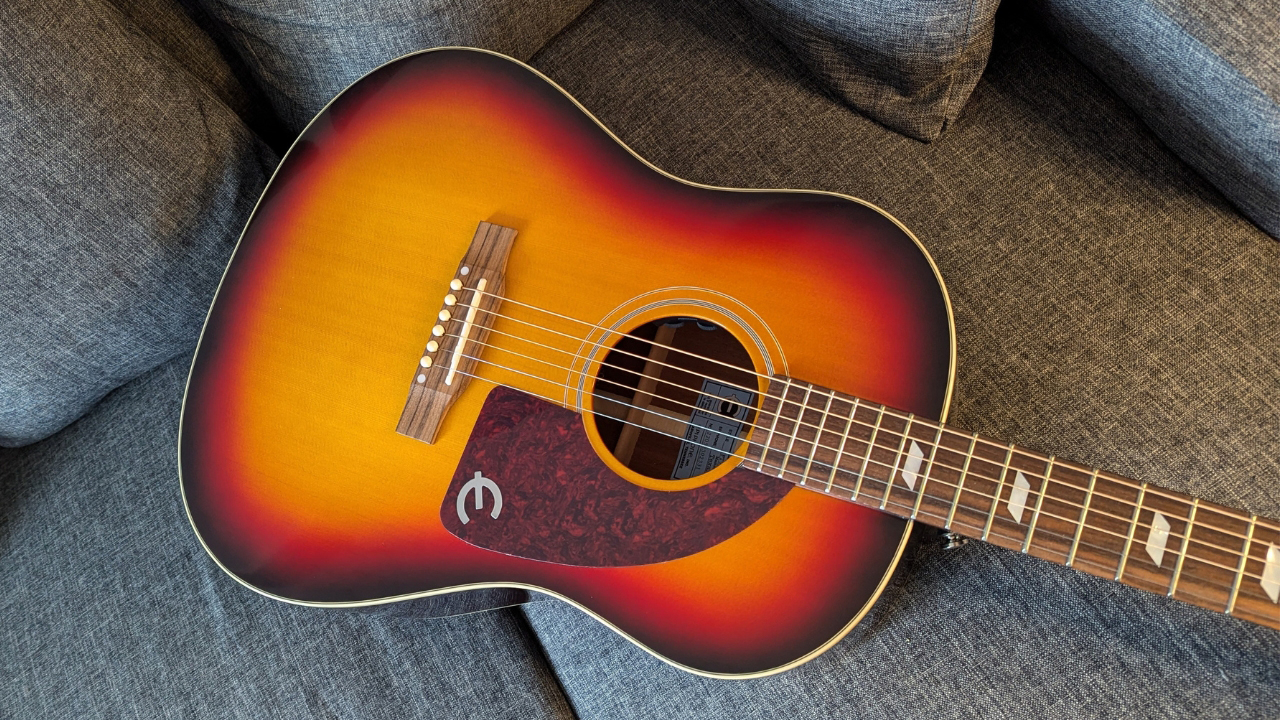
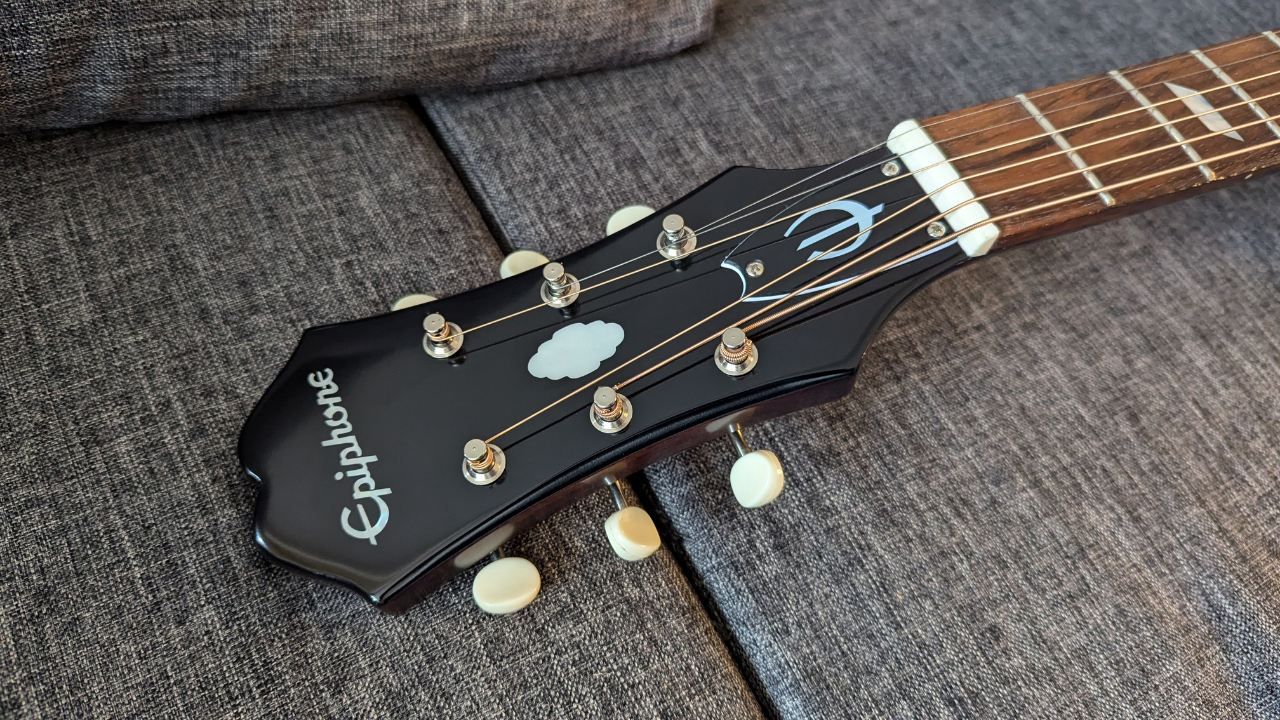
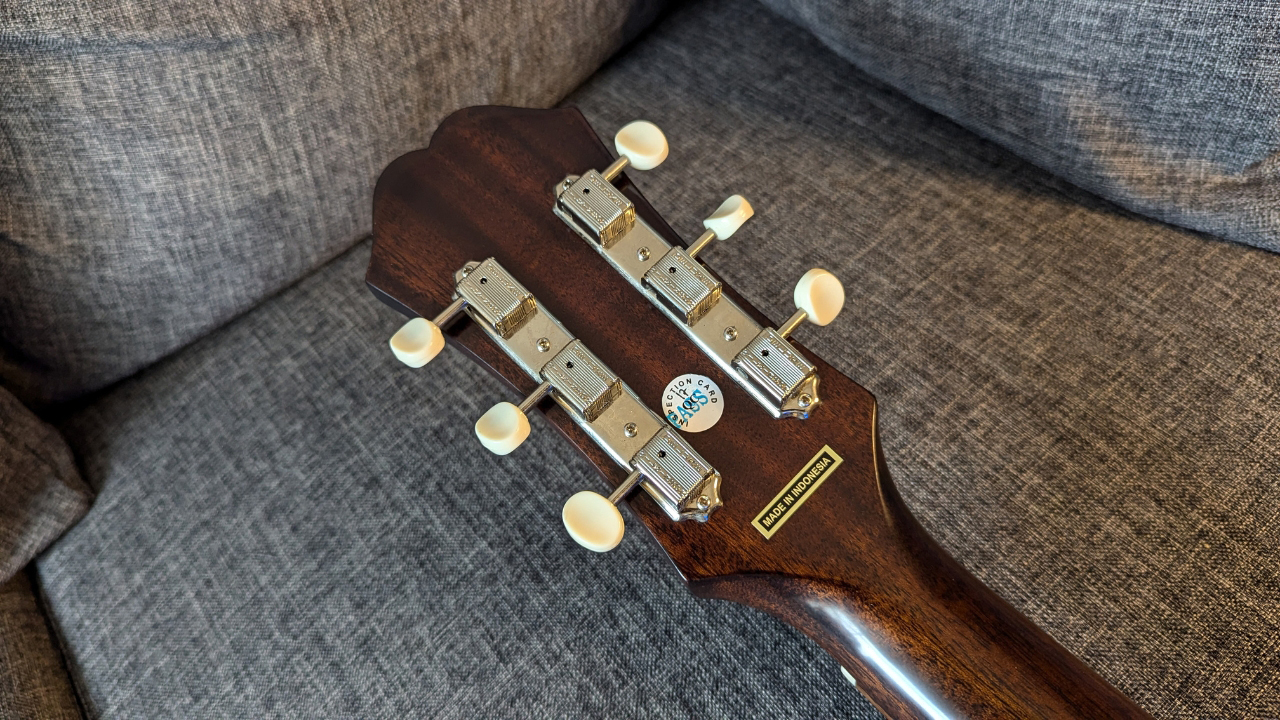
The round-shoulder dreadnought shape is designed to deliver a more balanced tone than those acoustics with square shoulders, and the Texan is constructed with a solid Sitka spruce top and solid mahogany back and sides. My review model comes in a classic Faded Cherry, giving more than a hint of Hummingbird with its glossy finish and Tortoise pickguard. The neck is glued in via a dovetail joint, a standard process for acoustic guitars.
The mahogany neck features a SlimTaper 60s ‘C’ profile, with a comfortable 43mm nut width for easy playing. The 2-inch radius laurel fretboard is marked with those distinctive mother-of-pearl parallelogram inlays, giving you 20 medium jumbo frets to play across. A GraphTech NuBone nut completes the neck appointments.
The 3 by 3 Wilkinson Deluxe tuning machines come with ivory buttons, while at the other end, you’ve got an advanced jumbo reverse belly bridge and a bone saddle. It comes with two strap buttons pre-installed, too, which is great for gigging acoustic guitar players. Sure to further delight live players, you also get a Fishman Sonicore under-saddle pickup with a Fishman Sonitone preamp and soundhole-mounted volume and tone controls.
Build quality
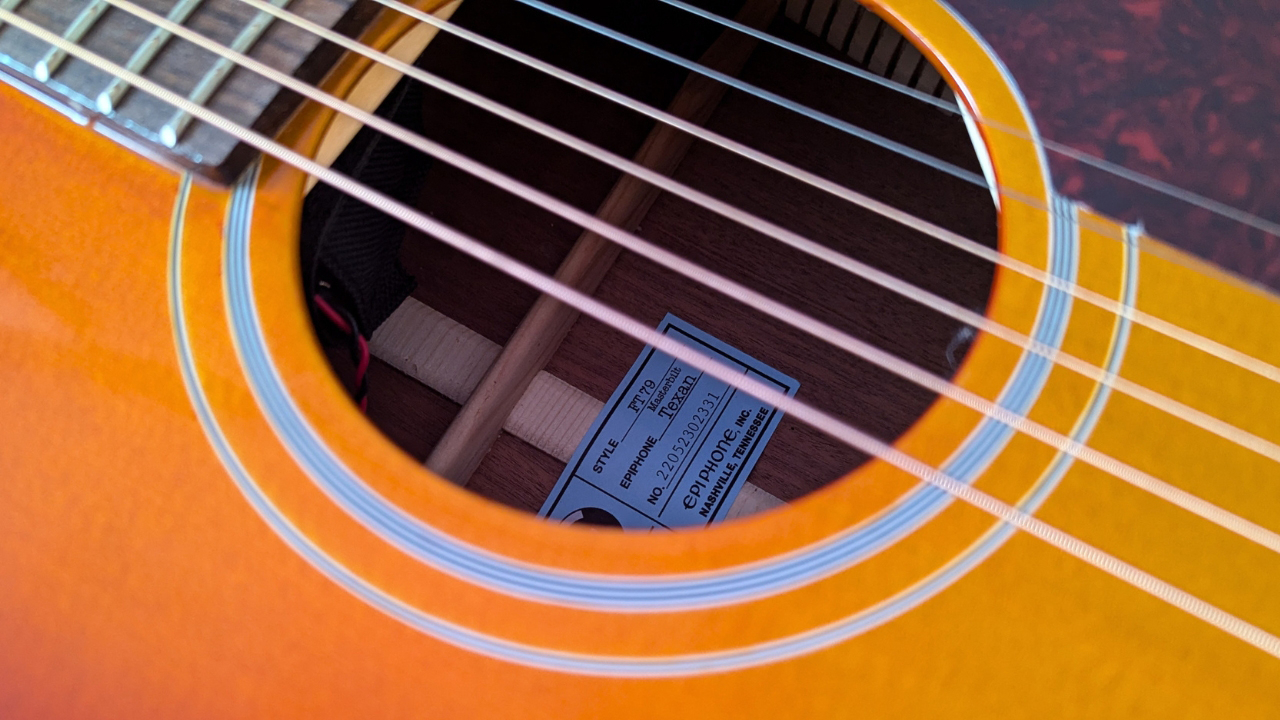
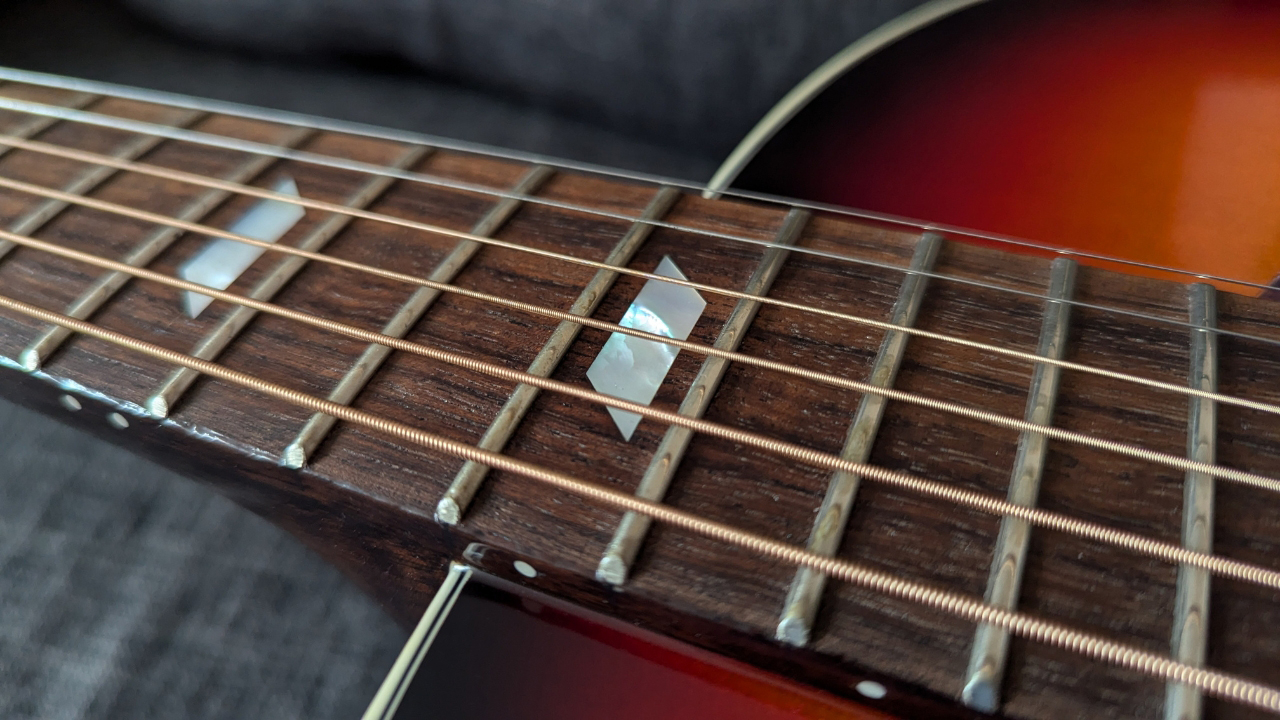
Examining the Texan in detail, I found the build quality to be fantastic. It’s a solid-feeling instrument that’s really well put together, with the only blemish my eye could discern being a slight lump of gloss applied near the side dot at the 19th fret of the guitar. Those great-looking parallelogram inlays are laid perfectly, as are the body binding and rosette, and it’s a gorgeous guitar that isn’t too gaudy.
The battery pack inside the soundhole has a cable running to the controls mounted on the top, which is a little unsightly as it runs across the view through the soundhole. Probably not a deal breaker, but some might like it tucked away out of view, and it’s something you could do yourself once you’ve taken the strings off. The battery location might also be an issue for live players should you need to perform a quick swap.
Playability
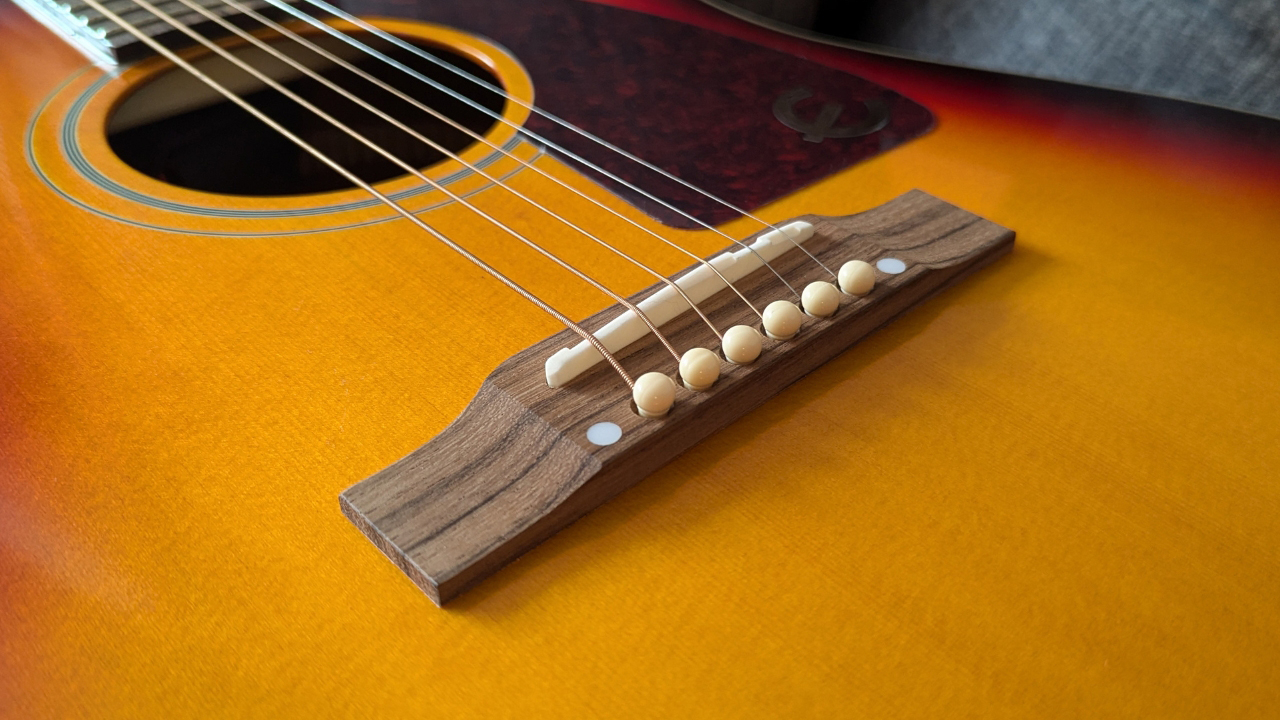
Picking it up to play, the first thing I notice is that slim neck profile. It feels great in your hand, giving a little bit of heft but feeling nice and slinky. You need that heft as well because the string tension at standard tuning feels quite high. Bending requires a lot of force and it took a little while for my hands to get used to it coming from my more regular electric guitar playing.
The string spacing feels equally comfortable whether you’re playing arpeggios with a pick or fingerstyle, and you can feel that string tension at your picking hand too. It made me lean towards playing harder as there’s not as much give in the strings, which could be good or bad depending on your preferences and playing style. I liked it, as I prefer a decent amount of tension in my strings so I can hit harder.
Sound quality
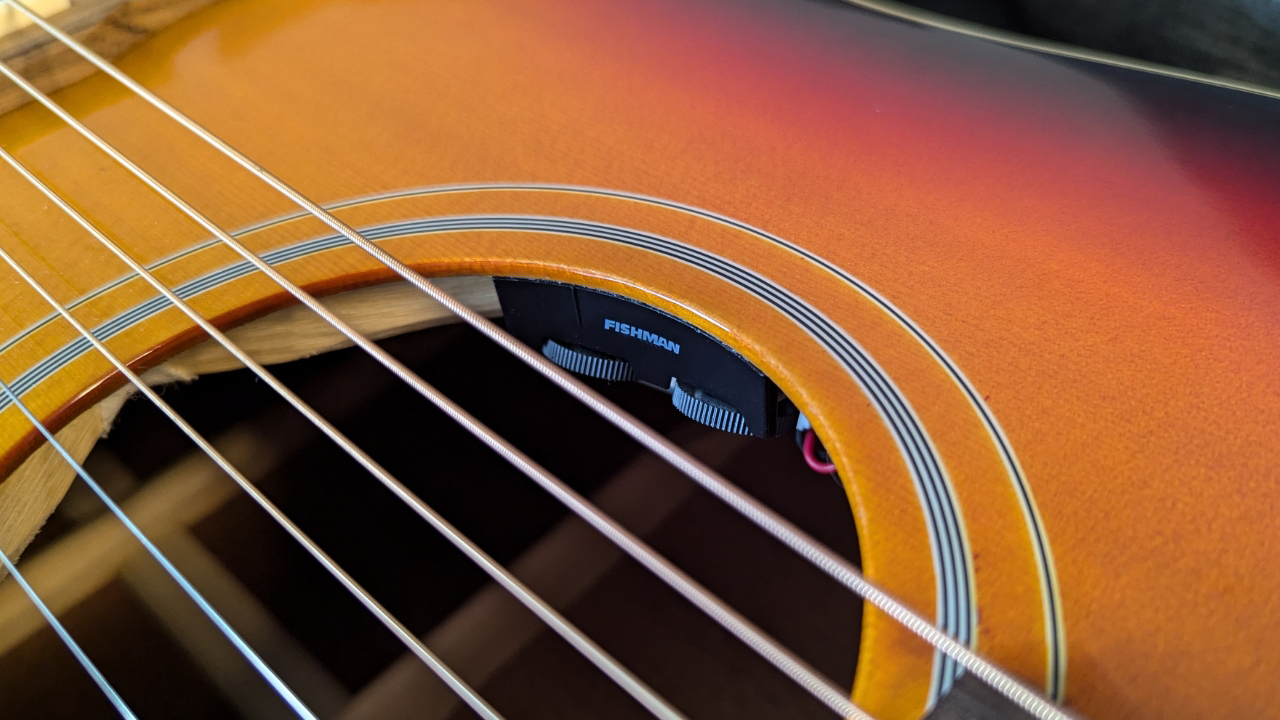
The Epiphone Texan is a glorious-sounding acoustic guitar and it sustains for days. The whole construction resonates beautifully when you strum it hard, delivering loads of low-end energy that’s never overpowering. The fact that it encourages you to play loud due to that high string tension really plays to its strengths, delivering a loud voice that’s lovely and warm. It’s balanced too, never sounding like the bass strings are getting in the way of the higher strings and vice versa.
The open strings ring out nicely without ever becoming overpowering, great for the drone-based riffs and arpeggios that I’m so fond of. Combined with that everlasting sustain you can build licks up gradually and create some fantastic dynamic guitar tones.
Playing nearer the bridge delivers a lovely ‘plink’ to your picking if you’re looking for a slightly more restrained and exotic tonality and picking all across the soundhole can give you a huge variety of sounds.
Final verdict
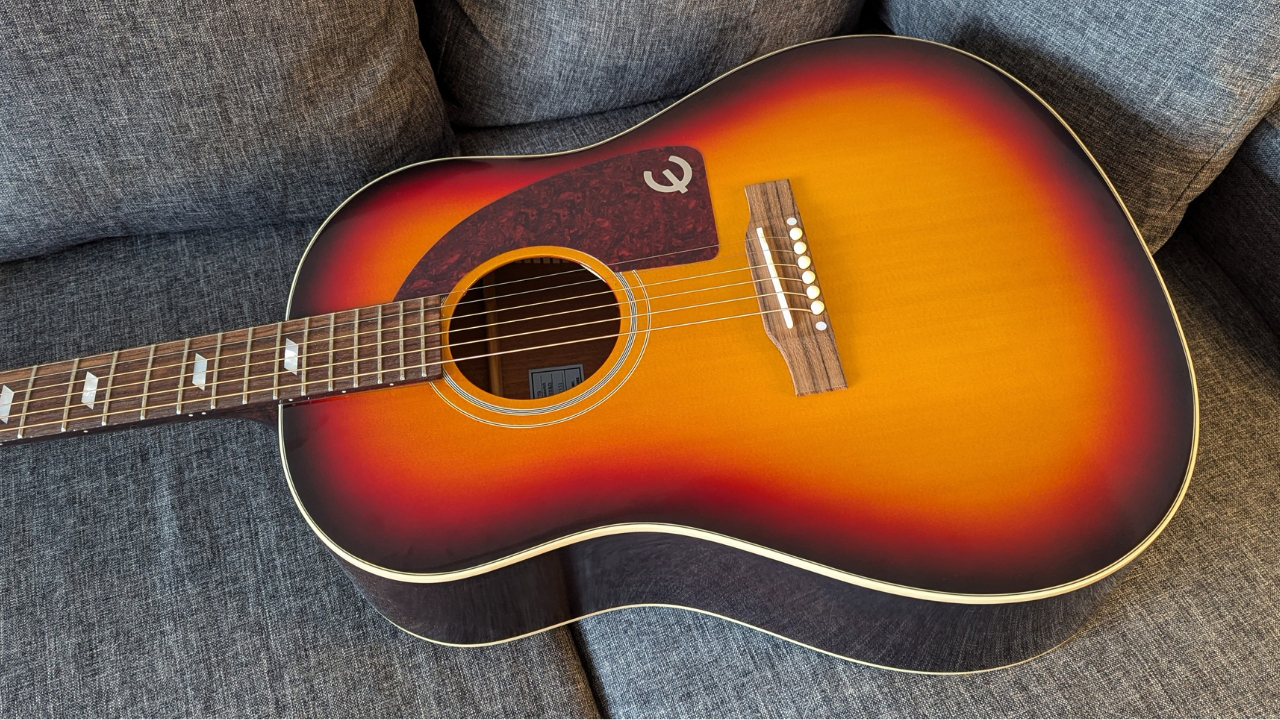
For less than a grand, you’re getting a lot of acoustic guitar with the Epiphone Masterbilt Texan. It’s a bit of an outlier versus the more popular J-45 and Hummingbird, but if you don’t fancy a shorter scale or the Hummingbird is a little too garish for your tastes, it’s a brilliant acoustic in its own right.
The high string tension won’t be a match for everyone, so it’ll suit those players who like to hit hard and make their guitar really shout. Overall though it’s got a beautifully balanced acoustic voice that’s equally adept with strumming and fingerpicking, so if you’re after something that’s a little different from the rest, I can highly recommend the Epiphone Texan
Specifications
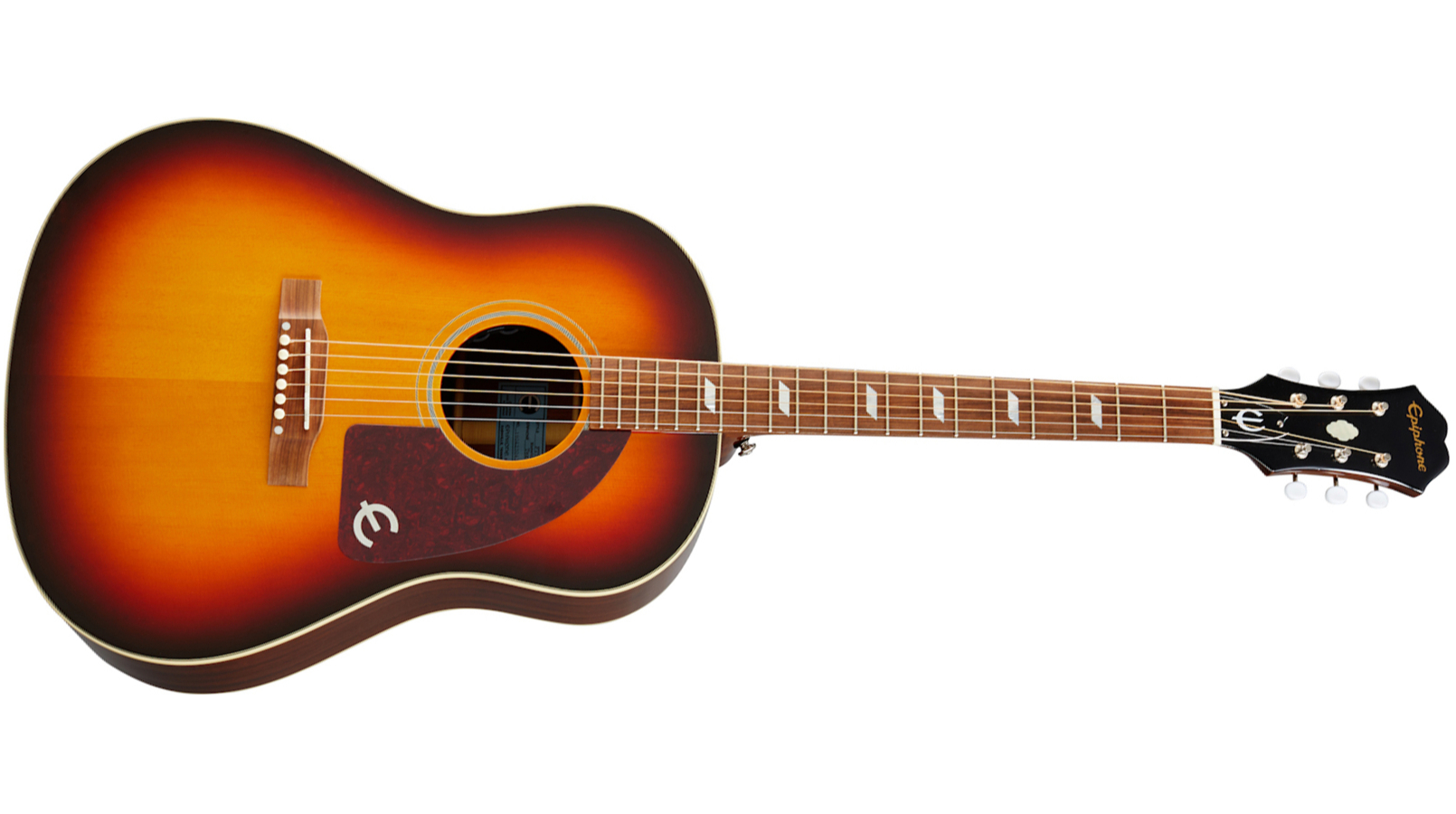
- TYPE: Round-Shoulder Dreadnought
- TOP: Solid Mahogany
- BODY: Solid Mahogany
- NECK: Mahogany
- NECK PROFILE: SlimTaper 60s C
- SCALE LENGTH: 647.7 mm / 25.5 in
- FRETS: 20 Medium Jumbo
- HARDWARE: 3x3 Wilkinson Deluxe tuning machines with Ivory buttons, Advanced jumbo reverse belly bridge
- PICKUP: Fishman Sonicore
- LEFT-HANDED: No
- FINISH: Faded Cherry (as reviewed), Antique Natural Aged
- CONTACT: Epiphone







